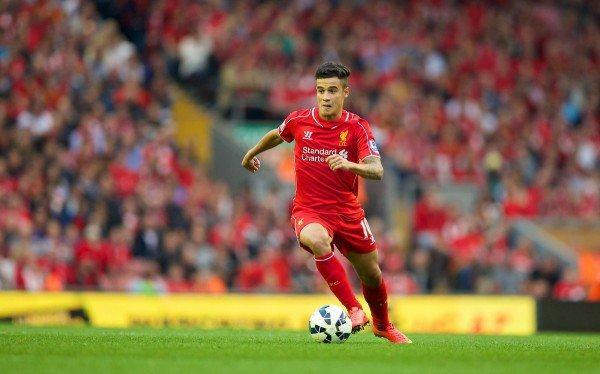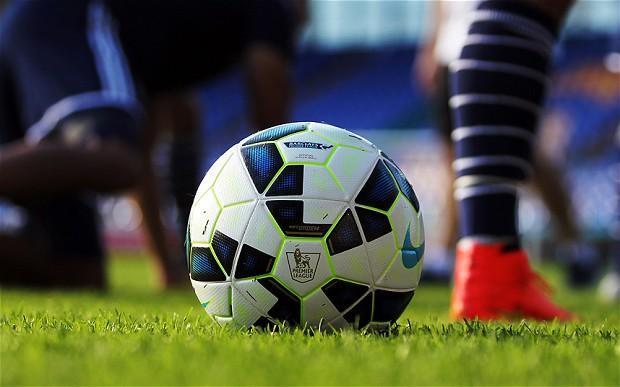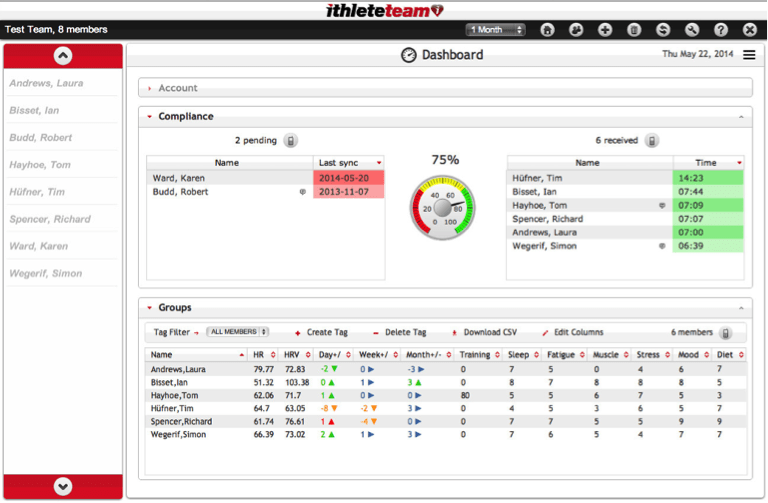The FA Barclaycard Premier League is one of the most exciting and competitive leagues to watch and undoubtedly one of the richest. Clubs now spend millions on state of the art training facilities and sport science departments. The role of a sport science at the very top has changed dramatically since the leagues inception in 1992.
Analysis of the workload on the players has taken center stage, the matches they are playing and the training they are doing are under closer observation than ever.
Reductions in injuries to players have been a major area for development in this field. Injury prevention has become paramount to success on the pitch and it’s the difference between silverware and well…. mediocrity. Take Manchester City for example, in 2012 Manchester City won the Premier League, recording the fewest injuries out any of the 20 squads in the top flight thanks to advancements in sports science.
As the Premier League is just about to kick off, we thought we would give you a peak into how the cream of the crop use heart rate variability (HRV) throughout the season.

HRV and Pre-Season
Lets cut right to it. Pre season is tough, very tough. It’s characterised by high volume training with short recovery periods between sessions. “Two-a-day” training sessions are common during this period, leading to high daily training loads for players (Lets not forget the high profile pre-season friendly thrown in for good measure!). Sometimes these high loads are singularly the results of poor performance during this intense period, but sometimes the culprit is a lack of player fitness coming into pre season training. Footballers commonly begin pre-season at different fitness levels depending on their off season activities and the quality of pre season training. Not surprisingly, fitter players are able to sustain higher intensities and manage higher volumes of training than less fit players.
At the top-level, coaches have to factor in players being involved in international tournaments during the summer. It’s the nature of the game. In reality players will probably have between two and four weeks off. From a physiological point of view they are unlikely to decondition significantly from a strength perspective, there is however an immediate decrease in cardio-vascular fitness. It is important for coaches to consider how to integrate the player back into training with the rest of the group. Usually this means a modified programme and extra time with the backroom staff. There will be progressive exercises and they will be monitored with heart rate variability (HRV) technology to see if there are any warning signs.
With that in mind, each player’s response to training must be monitored, and training sessions adjusted accordingly. Using HRV at this point in the season is perhaps more crucial than at any other time. An important role for the coaching staff during pre-season is in the handling of “unfit” players. Players will not always follow the off-season programme given to them, which is designed to help maintain a certain level of fitness during the holiday period. The unfit players require more recovery time than players who come back in a good condition. This is where the ithlete Team App earns its place in the squad.
The ithlete Team App is a single destination for viewing and managing all the teams data. It resides on the ithlete Cloud making it secure and accessible, any time of the day. Coaches can use the dashboard to quickly evaluate their team’s HRV and subjective data such as sleep, fatigue, mood, stress, and diet to determine readiness to train and perform. Pushing a player too far could result in injury. With the help of the ithlete Team App, HRV measurements will help get the balance just right and will set that player up for the rest of the season and who knows they may just end up being the difference between European football and a relegation dogfight …
HRV and the Christmas run in
Whilst most of us are embarrassing ourselves at work Christmas parties and/or eating and drinking our bodyweight in turkey and mulled wine, the Premier League season is in full flight. Lets put how important this period is into perspective, by Christmas 2014 the winners of 21 of the 22 Premier League titles have been in the top four on Boxing Day. The team second on Boxing Day have won four times, the team in third have won four times, and the team in fourth have won once. The games come thick and fast and it’s certainly not the time for guessing the intensity levels to set training sessions at.

Most Premier League clubs are now taking advantage of HRV monitoring, which can provide the coaching staff with a measurement of the players current fatigue level. Not only that but measuring and tracking HRV presents a more precise picture of a players overall health. So what do the coaches look for? Well, a high reading combined with a normal resting pulse is good news– the player can train hard that day. A low reading means the player should take it easy, providing them with a relatively guilt-free rest day or light session. And while the body is in recovery mode, they are allowing sufficient recovery time to get ready for the next match that is just around the corner at this busy time.
HRV and the End Stretch
As Sir Alex Ferguson said its ‘squeaky bum’ time. This is where the pre season, appropriate training and recovery makes the difference. It’s the difference between a late charge for Europe or gaining those precious points edging you closer too Premier League survival. This is where the sports science departments earn their money. The hard work has been done its now about keeping your star man fit and raring to go. HRV monitoring is crucial here, Helgerud et al (2011) in their study of footballers and HRV found strong relationships between HRV and training load that indicate early monitoring may assist in identifying training workloads for those crucial upcoming weeks.
Whether it’s the title or avoiding a relegation battle could therefore depend on the careful management of player’s cumulative fatigue levels during the end stretch. What is clear is that apart of the answer is certainly heart rate variability monitoring and if the coaches are on the ball then the answer is ithlete.


Which clubs are using it. The reference to premier league is a bit misleading if there’s no facts connecting to assertions in the story.
Hi JP,
While we can’t publicise client’s names we do know HRV to be used in the Premier League.
Best, Laura